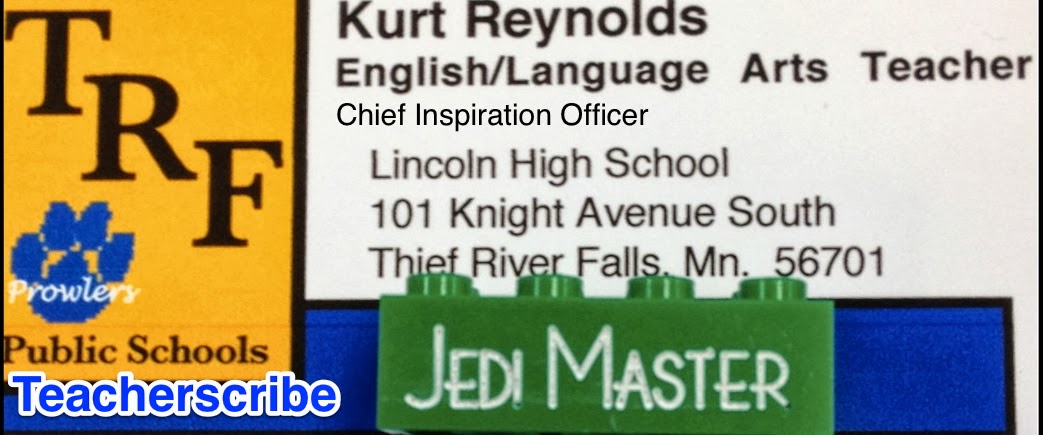Teacherscribe’s
Teaching Tip #178
To earn the WEM
award, I had to answer several questions in essay format. Here is one of them that I found particularly
interesting.
How do you develop
student-developed goals into your classroom?
2. There are a number of ways I incorporate
student-developed goals into my classroom. First, my classes craft their own
core values. I share the core values of our staff with my classes; we discuss
what we liked about them and how we might develop our own core values. Next, I ask my students to search companies,
teams, and organizations they admired to find examples of other core
values. Then using a shared Google Drive
document, I had each student devise three core values. Finally, over the course of two days, we
examined all of the suggestions, grouped them into five general themes (facing
failure, rigor, acceptance, respect, learning), and finally combined and
reworked the student-generated suggestions into five core values: 1. Failure is essential and inevitable; the key
is to learn from our failures. 2. Keep
it simple but make it significant. 3. Be open-minded and explore new things:
STEP OUTSIDE OF YOUR COMFORT ZONE. 4. Respect ideas that aren’t your own. 5.
Take something new from class everyday.
This little exercise, done the first week
of the year, is critical in helping us forge a remarkable classroom
culture. What I love about these core
values, which we display on a whiteboard, is that every time I see a student
doing something that embodies a core value, I recognize it and praise them in
front of the class. Soon I have other
students recognizing their classmates (and even their teacher) when they meet a
core value. This exercise has become an
absolute must in my classes to not just implement student-developed goals but
to also help foster our classroom culture.
Another way I seek student input for
achievement is through surveys. A
requirement of teaching College in the High School is to administer an
anonymous survey at the end of the semester.
Students analyze their efforts as well as my effectiveness. They offer suggestions that help reinforce
the effectiveness of the readings and assignments; they offer feedback on what
can be improved to help me improve the course and keep it engaging and
relevant. This feedback is vital in
helping me shape my classes.
I also use action research, first
developed by Dr. Nancy Dana, to refine my practice and to ensure that my
content leads to student learning and academic gains. I just completed an action research study in
conjunction with professors at UND and other teachers and administrators from
the area. My topic focused on how I
modified the way I delivered feedback on my students’ essays in order to
improve their writing and, ultimately, be prepared for the rigors of writing in
college. In the past, I used to have
students turn in their rough drafts. Then I would scawl comments and feedback
on them and return them as soon as I could, which sometimes was the next day
but often was several days later. This was not effective. The scores on my
students’ final drafts proved this. So
since we moved to a 1:1 MacBook Air school, I decided to try something
different to give better feedback to my students. Now, students share their rough drafts with
me via Google Drive, giving me editing privileges. This way I can drop in on them while they are
actually writing and give them immediate feedback. Students don’t have to wait
a day or two to get their drafts back.
My feedback now is immediate, and students’ scores on their final drafts
have risen significantly. Best of all,
once I help students with such basic things as avoiding sentence fragments,
fixing run-ons, crafting engaging introductions, and using examples to support
their claims, early on in the semester, they more easily master these skills
and apply them on their own without having to rely on me helping them as much
later in the semester.


No comments:
Post a Comment